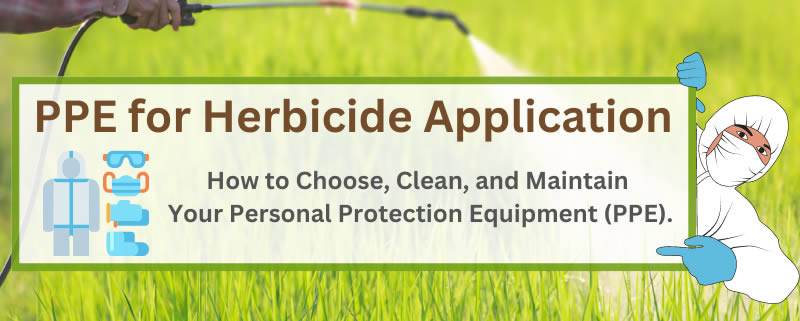
Any person who uses or plans to use herbicides must read the product label from the outset. In the world of herbicides, this is a golden rule that must be respected, regardless of the situation.
Why, you might ask?
Apart from discovering the regulations and laws that apply to that specific herbicide, the label tells you something else important.
Every herbicide, regardless of the brand, name, or type, has a signal word on the label that indicates how toxic it is and what PPE you need to use.
Most herbicides use the words “Caution” and “Warning”. What do these signal words mean?
“Caution” means the herbicide may cause slight eye or skin irritation. The herbicide labeled “Caution” is the lowest in toxicity.
“Warning” also means that it can cause eye and skin irritation, as well as symptoms of herbicide poisoning. These effects can occur only if you are exposed to a small amount.
In what follows, I have prepared a short guide on PPE (personal protective equipment) for herbicides, their importance, what they are, and how to clean and care for them. My guide is for everyone, even those who are just using herbicide for the first time.
Let’s start.
Contents
Herbicide respiratory protection

What is respiratory PPE?
Respiratory PPE is a type of protective equipment or device that is specially designed to protect individuals who work with herbicides from being exposed to and inhaling harmful substances, particles, or gases, such as the chemicals found in herbicides that can affect a person’s respiratory system.
In general, people such as farmers, landscapers, groundskeepers, or even homeowners choose to use herbicides to eliminate unwanted plants and vegetation.
When working with herbicides, as mentioned previously, it is crucial to inform yourself about the product before use and follow the manufacturer’s instructions and recommendations, including using appropriate PPE.
Many people get confused when it comes to respiratory PPE. This confusion is generated by the fact that the most common herbicides’ labels do not necessarily advise wearing respiratory PPE.
And, of course, the most common question ends up being: ok, so, do I need to wear a mask when spraying herbicide?
The answer is yes, you should wear a mask when spraying herbicides, or at least an N95 mask.
Although the label may not necessarily recommend its use, I believe it is good to wear a mask not only when spraying herbicides but also when mixing them.
Herbicides contain chemicals that can be potentially harmful when working with them.
Depending on the type of herbicide, it can produce vapors, mists, dust, or other types of small particles that can be inhaled, affecting the respiratory system or causing irritation and other types of damage.
To avoid even the slightest chance of harm, I suggest you use respiratory PPE when working with herbicides.
I like to be very careful when working with herbicides and I always choose to wear a full-face mask when preparing the solution and spraying it. This type of respiratory PPE covers my nose, mouth, and eyes, creating a complete barrier, and preventing me from inhaling harmful substances, regardless of size.
How to choose respiratory PPE?
There are different types of masks to choose from when working with herbicides. The most common ones that people choose to wear are the following:
1. N95 mask.
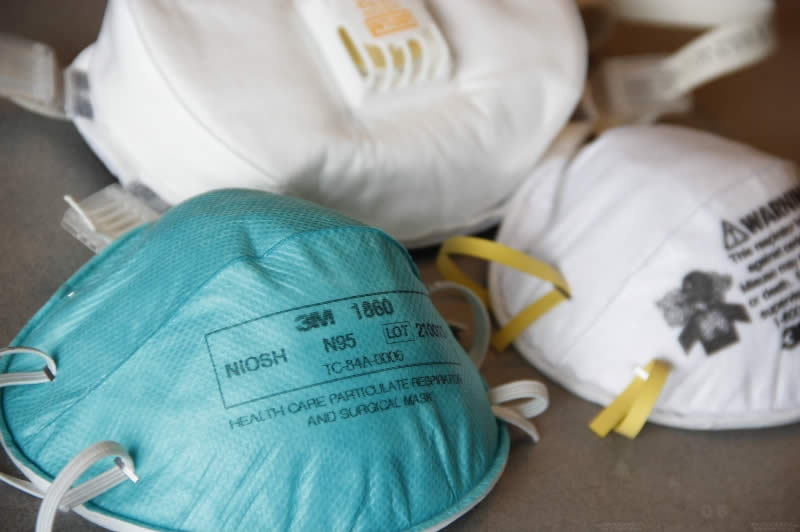
An N95 mask is a type of respiratory PPE that is able to filter out almost 95% of airborne substances and particles.
Capable of preventing you from inhaling both large and small particles, the N95 mask is a good minimum level of protection that you can use when dealing with herbicides.
According to the performance criteria established by the National Institute of Occupational Safety and Health (NIOSH) in 1995, this mask is not resistant to oil (code N) and has an effectiveness of a couple of hours, depending on the environment.
Let’s say, in the case of a large piece of land, if you spray with herbicide for more than 5 hours, you should consider replacing it.
2. Half-face mask or Full-face mask.
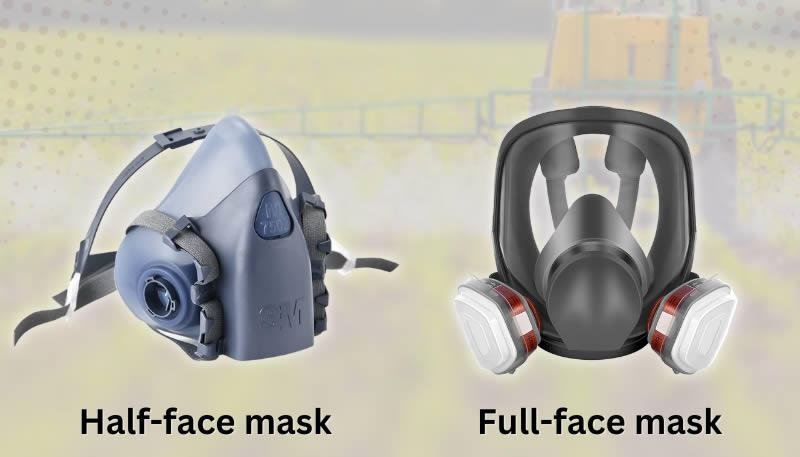
The half-face and full-face masks are similar in function but have different designs.
The difference between them is that the half-face mask covers only the mouth and nose, while the full-face mask covers the entire face, including the eyes.
Both of these types of masks are highly used in industries where herbicides must be applied to protect workers from airborne particles and gases.
Compared to the N95 mask, which has a fixed filter, these two types of masks are designed with replaceable filters or cartridges that can be easily changed out. They are classified based on the type of filter they contain according to the NIOSH performance criteria.
When choosing a mask, it is important to check the type of filter it has. The mask should have filters or cartridges that are compatible with the specific herbicides being used and should provide sufficient protection against both particulate and vapor hazards.
These three types of respiratory PPE are great for those who work with herbicides.
However, how to choose the respiratory PPE that is right for you?
You can choose a respiratory PPE by considering factors such as the type of herbicide you will be using, the concentration required, the amount of herbicide being used, and the duration of exposure during spraying.
Let’s take a closer look at the subject.
A. Type of Herbicide
Check the label of the herbicide. In some cases, the label provides you with the exact information, meaning the exact type of respiratory PPE, that you need to use when working with that herbicide.
If the label does not specify anything, then look for other signs like the signal word. Does it say caution or warning?
B. Herbicide concentration
Based on the level of infestation and type of weeds, you will need to work with a specific concentration of herbicide.
To determine the correct concentration, you will need to mix a specific amount of herbicide with water. Determine if you need a more concentrated solution or a less concentrated one.
A more concentrated solution implies that you will need to mix a greater amount of herbicide, resulting in exposure to a larger quantity of herbicide dust or debris.
C. Duration of exposure
Additionally, consider the duration of exposure, which can be determined by the size of the area you need to spray. Will you need to spray a large area and be exposed for several continuous hours? Or will you only need to use it for 30-60 minutes for spot treatments?
Other factors that you should not overlook include:
- It is crucial to use your chosen respiratory PPE correctly and ensure that it fits your face properly.
- If you opt for a half-face or full-face mask, it’s a good idea to purchase extra filters or cartridges so that you can replace them as necessary.
Suggestions
PPE eye protection
What is eye protection PPE?
PPE eye protection is a personal safety device made to protect the eyes by creating a barrier between them and external hazards.
In the case of herbicides, it protects against chemical splashes and flying substances that could potentially harm the eyes.
There are two types of PPE eye protection from which you can choose:
- goggles
- shield

Both goggles and shields are designed to function similarly by protecting your eyes from impacts and other types of hazards.
How to choose PPE eye protection?
To choose the right PPE eye protection, you should consider the type of herbicide and its substances that you will be exposed to when mixing and spraying it. It is ideal to choose a PPE eye protection that is durable, comfortable, and provides a good fit.
Always remember the golden rule and check the label. If the label specifies the exact type of PPE eye protection you need to wear, be sure to follow the label’s safety standards.
I suggest you wear PPE eye protection when working with herbicides in windy conditions.
Suggestions
PPE Clothing For Skin Protection
Protecting your skin is very important when handling herbicides, as it is the most vulnerable part of your body to direct exposure.
The right personal protective equipment (PPE) for spraying herbicide is the one that covers the most parts of your skin, such as:
- Long-sleeved shirts
- Long pants
- Chemical-resistant gloves
- Long socks
- Chemical-resistant boots
For the clothing items such as shirts, pants, and socks, there is nothing special that I can tell you about. As I said earlier, they need to be long to avoid the herbicide solution from coming into contact with your skin during spraying.
However, there is more to discuss regarding boots and gloves.
Let’s start with boots.
1. Chemical-resistant boots
Although the design resembles some simple rubber boots, they are more than that.
Chemical-resistant boots are different from normal ones in that they are made of special and resistant materials that resist exposure to some chemical substances.
They protect your feet by preventing skin contact and prevent accidents such as spills, splashes, and even slips and falls through the slip-resistant sole that they have. Also, they reduce the risk of spreading the herbicide and contaminating other clean areas.
When buying a pair, make sure that the boots you purchase provide at least 6 inches of coverage to your lower legs and ankles, and that they are comfortable to wear.
Suggestion
2. Chemical-resistant gloves
In addition to chemical-resistant boots, chemical-resistant gloves are also made of durable materials that provide protection to the skin when exposed to chemicals.
What to look for when searching for a pair of chemical-resistant gloves? Durable material, great length, snug fit.
The gloves should be made of durable materials that can withstand exposure to herbicides, long enough to cover your arm and offer a snug fit to prevent any herbicide from leaking inside.
Suggestion
3. Additional PPE for skin
All the PPE for the skin mentioned above is mandatory, and you will see it written on all herbicide labels. If you do not think it is enough, you can always add more protection by choosing to wear additional protective gear, such as:
- Disposable jumpsuits
- Chemical-resistant aprons
Tips: If you have clothes that you like or clothes that you love wearing while working, I advise you not to wear them when spraying herbicide.
It’s always a good idea to have an extra set of clothes specifically for spraying herbicides, as well as another one to change into once you’re done. Put the clothes used to spray the herbicide in a closed plastic bag until you get home.
If you happen to splash herbicide solution onto your clothes or if you feel that your clothes have been soaked with herbicide, it’s best to change into a fresh set of clothes as soon as possible.
Suggestion
Cleaning and maintaining the PPE after using Herbicides

In my experience, it’s better and much cheaper to take care of your PPE than constantly replacing it.
The secret to prolonging the lifespan of your PPE is to maintain it by washing it properly as soon as possible after every use.
Why so soon? Because it’s easier to remove fresh chemical substances from the equipment than to let them accumulate and try to remove them later.
Remember the golden rule! Before cleaning your PPE equipment, check the herbicide’s label for instructions!
Below, I’ll share with you my ritual for washing PPE equipment and how to properly maintain it after using herbicides.
Cleaning and maintaining Eye PPE equipment
Eye PPE equipment is easy and quick to clean. Here’s how:
- Prepare your face shield or goggles.
- Place them in warm water and gently wash them with mild dish detergent. Avoid scrubbing to prevent damage.
- Make sure to remove all dust and particles.
- Rinse thoroughly and let them dry.
- Inspect them one more time.
- Store them in a clean place.
Cleaning and maintaining clothing used to spray herbicides
The clothes are also easy to clean, you just have to be a bit more careful with them, but is still pretty easy if you follow these steps:
- Separate clothing with herbicide residue from all other clothing.
- Place some of the clothes in the washing machine. Do not wash them all at once, but only a few items at a time.
- Set up the washing machine to the highest water level.
- Use hot water with temperatures up to 140°F.
- Use heavy-duty laundry detergent. Do not use bleach or other additives because they do not help in any way. The detergent is enough.
- If the clothes have a water-repellent material, use double the amount of detergent.
- Double rinse and check for any remaining residue.
- If needed, re-wash the clothes again.
- Hang them to dry.
- Once the clothes are drying, clean the washing machine. Set up the washing machine to a cycle without any clothes in it. You want to remove all residues from the washing machine before using it with normal clothes.
If your clothes are soaked in a herbicide solution, do not wash them! Do not ever wear them again! Dispose of them properly.
Cleaning and maintaining chemical-resistant gloves
- After you finish spraying with herbicides, do not take the gloves off.
- Wash the outside of the gloves very well with water and mild soap or detergent.
- Check them, and if needed, re-wash them.
- Take them off carefully and let them dry.
- Store them in a cold and dark place away from sunlight.
Do not place them in the washing machine because you will ruin them. Also, do not put them in an automatic dryer because they will melt.
Cleaning and maintaining chemical-resistant boots
- After finishing spraying, take a sponge, a dry cloth, and a brush.
- Use the brush to remove small pieces of residue from underneath the shoes.
- Then, clean the rest of the shoes using warm water and a small amount of detergent.
- If you still cannot remove the particles from the shoes, you can add a bit more detergent.
- Rinse them with warm water, being careful not to wet the boots inside, as you only need to clean the outside.
Note that you should not wash your chemical-resistant boots in the washing machine.
Safety Tips
- Always check the herbicide label and wear the proper PPE equipment recommended by the manufacturer.
- Your PPE equipment should fit well in order to provide adequate protection.
- If your clothes become contaminated with herbicide or are soaked, change immediately into new gloves. Do not try to clean or reuse soaked PPE.
- Clean your PPE equipment after every use.
- If you use a mask with a filter, make sure you change frequently the filter with a new one.
- Store PPE equipment, especially gloves, boots, and goggles, in a cool, dark place away from direct sunlight.
- Regularly check your PPE equipment and make sure there are no holes or other types of damage.
- If your PPE equipment is damaged (for example, if you find a hole in your boots), dispose of it responsibly and replace it.
- Take a full bath as soon as possible after working with herbicides.
FAQs
Does an n95 mask protect against herbicides?
An N95 mask can provide some level of protection against herbicides, but only to a certain extent.
This type of mask is not specially designed for herbicides; still, it can filter out 95% of airborne particles. Since many herbicides are labeled as “caution” products, an N95 mask can offer protection against herbicides, but not to the greatest level, rather to an inferior one.”
Do you need to use PPE when using organic herbicides?
Yes, you need to use PPE when using organic herbicides.
In general, you should at least wear gloves, eye protection, and a respirator when working with any type of herbicide. Always check the label of the herbicide because it states exactly what the person using the herbicide needs to wear.
Do you need to wear a mask when spraying Roundup? What PPE is required when spraying Roundup?
According to the Roundup label, it is not necessary to wear a mask when spraying it. The label recommends wearing the following PPE equipment: a long-sleeve shirt, long pants, shoes, and socks.
However, the label also indicates that if the herbicide is used in a closed system, then the Worker Protection Standard 40 CFR 170.240 (d) (4-6) applies. The Worker Protection Standard specifies that if a closed system is used and operated under pressure, then eye PPE equipment should also be worn.

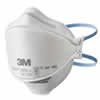 N95 Disposable masks
N95 Disposable masks 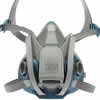 Half Facepiece Reusable Masks
Half Facepiece Reusable Masks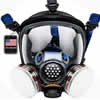 Full Face Reusable Mask
Full Face Reusable Mask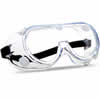 Goggles
Goggles 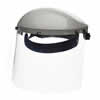 Shield
Shield 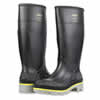 Chemical-resistant boots
Chemical-resistant boots 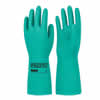 Chemical-resistant gloves
Chemical-resistant gloves  Disposable jumpsuits
Disposable jumpsuits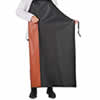 Chemical-resistant aprons
Chemical-resistant aprons
I am looking for a respirator rated for mists. I am spraying herbicides from a ATV sprayer and creating mists particularly on windy days. I’m currently using a n95 mask, but would like something more effective. Do you have any suggestions?
Hi Donald,
When you’re using herbicides and there’s mist around, it’s important to wear a good respirator for protection. N95 masks are mainly for dust, and they might not be enough for mist.
Instead, you should think about using a respirator that gives better protection, like a P100 or N100 respirator.
P100 respirators give the most protection against both dust and mists. They work better than N95 masks and are good for misty conditions.
N100 Respirator: N100 respirators are similar to P100 and provide high-level protection against dust. Just make sure it’s rated for mist exposure.
Or you can choose a half-face respirator with cartridges. Check that the cartridges are suitable for herbicides, and change them regularly following the manufacturer’s instructions.
I hope my response was helpful to you.
The information you provided was very helpful. One last question: Can you get a p100 mask in cloth like a n95 mask, or does it have to be a half mask with cartridges?
Thanks
I’m glad the information was helpful!
P100 masks are usually half-mask respirators with replaceable cartridges, as they provide a tight seal and high filtration efficiency. Unlike N95 masks, which can be made of cloth-like material, P100 filters require a more rigid structure to meet the higher filtration standards.
However, some manufacturers do make P100 disposable respirators, which are closer in design to N95 masks but still have a more structured form. These often include exhalation valves and a sturdier design compared to standard N95s.
If you’re looking for something lightweight but highly protective, an elastomeric half-face respirator with P100 filters is a great choice, especially for spraying herbicides. Just make sure the cartridges are rated for organic vapors if needed.
Let me know if you need more details!
Best,
Dani